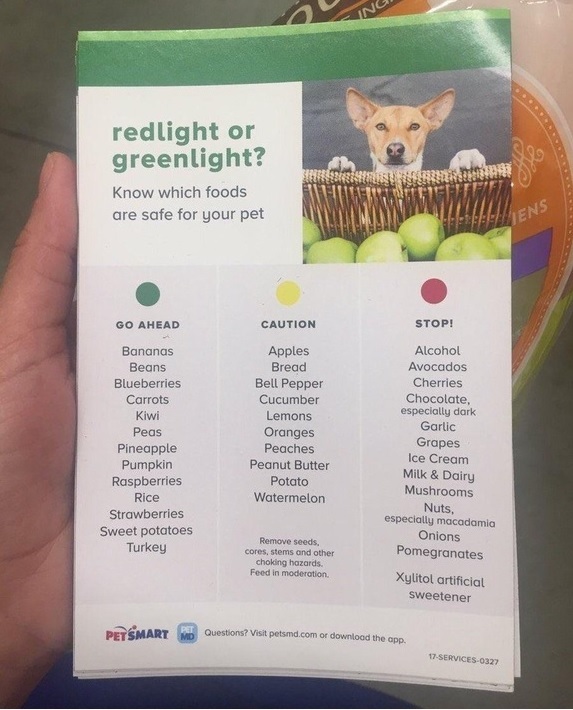View this post on Instagram
When I first got my mutt, Redford, from the pound, I was besieged by helpful advice—thank god.
Some of that advice involved what not to feed my dog—coffee beans, avocadoes (even little bits), chocolate…not that I was particularly planning on giving any of that to my dog, but you never know what might be found, and devoured, on your floor or in the leftovers of an otherwise yummy, healthy burger.
I also rented the whole series of Dog Whisperer TV shows on the National Geographic channel, having read about his dog psychology/human training methods in The New Yorker (the thinking person’s weekly bible). Two years later, I still netflix the Whisperer, and enjoy and learn a great deal every time I do so. My next DVD arrives Friday!
Below, advice from The Dog Whisperer’s Vet-in-Residence:
Common Foods That Can Be Toxic to Our Pets
Written by Dr. Sherry Weaver
We all love our pets. For many of us, one way we show that love is through special treats such as human food. As long as we don’t overindulge our loved ones into obesity, these little treats can be fun for both pet and parent. However, it is important to realize that dogs and cats are very different from humans in some very important ways, which can result in tragedies for the uninformed parent.
One of the newest and easily available human foods toxic to dogs, is xylitol. Xylitol is present in products from gums to sugar free cookies. When ingested in relatively small amounts, this sweetener can result in low blood sugar, seizures, liver failure and death. These symptoms can show up as quickly as 30 minutes or as long as 12 hours after ingestion, and treatment must be quick and aggressive or they can be fatal.
Grapes and raisins have been found recently to induce kidney failure in some animals. This failure can be permanent and life threatening. It does not seem to relate to the volume ingested, and not all animals seem to be equally susceptible. Although some dogs have been eating grapes for years, the safe course is to avoid grapes and raisins completely.
Due to articles such as this, many people are now aware of chocolate’s toxicity in dogs and cats. With the recent popularity of chocolates that are 60 and 70 percent cocoa, this risk has become much more serious. Dark chocolates have always been more toxic than milk chocolates, and these newer chocolates are even more so. Toxic doses of chocolate can cause abnormal heartbeats, kidney failure and death. The toxic dose is dependant on weight, so little dogs are at higher risk, but with the higher levels of cocoa in chocolate products now even bigger dogs are at risk.
Onions are tasty for our pets as well as us, but too many onions can be dangerous. High levels of onion ingestion in dogs and cats can cause life-threatening anemia.
With any toxic exposure, minutes count so knowing what to do can save a life. Most importantly, you should have the phone number of poison control, your regular veterinary and an after-hours…
For more, from Reddit (click here to read more notes and dialogue):
If your dogs are fuzzy vacuum cleaners like mine is, then you should probably make sure you know what to keep them away from. And if you have a cats… well I’m not quite sure why you would have a cat instead of a dog, but you probably still shouldn’t poison them.
Here’s the list of foods that can make your pets ill. Some of them can be fatal:
- Chocolate– fast heart rate, hallucinations, severe diarrhea, epileptic seizures, heart attacks, internal bleeding, and eventually death
- Ethanol (Alcohol)– animals are generally more susceptible to alcohol than humans are. The caveats here are similar to alcohol poisoning in humans.
- Raw yeast dough– intestinal obstruction and/or ethanol poisoning
- Hops (beer hops) Edit: the plant, not necessarily beer itself. — malignant hyperthermia in dogs, usually with fatal results
- Avocados– possible damage to the heart muscle cells, leading to heart failure
- Grapes/raisins– acute kidney failure
- Macadamia nuts– non-fatal stiffness, tremors, hyperthermia, and abdominal pain
- Onions, garlic, shallots, etc.– hemolytic anemia
- Xylitol (sweetner found in gum and other sugar-free things)– toxic or even fatal liver damage
- Moldy or rotten food– some molds produce toxins called tremorgenic mycotoxins, which can cause serious or even life-threatening problems if ingested by dogs.
- Raw meats and raw eggs– Salmonella and E. coli can be bad. Raw eggs contain an enzyme called avidin that decreases the absorption of biotin (a B vitamin), which can lead to skin and coat problems.
- Salt– Large amounts of salt can produce excessive thirst and urination, or even sodium ion poisoning in pets; vomiting, diarrhea, depression, tremors, elevated body temperature, seizures and even death.
- Milk– mammals are naturally lactose intolerant
- Bones– choking hazard; splintering can cause damage to soft tissues.
Now here’s a shitty picture of my dog being weird.
Sources:
http://www.aspca.org/pet-care/animal-poison-control/people-foods-avoid-feeding-your-pets
http://www.aspca.org/pet-care/virtual-pet-behaviorist/dog-behavior/foods-are-hazardous-dogs
http://en.wikipedia.org/wiki/Dog_health#Dangerous_foods
More: “Just a heads up. Know what foods are safe for your dog.”



Read 13 comments and reply